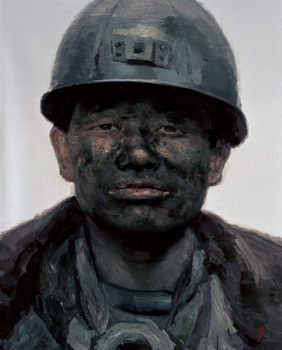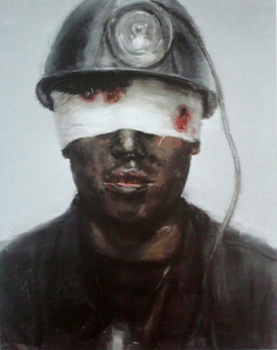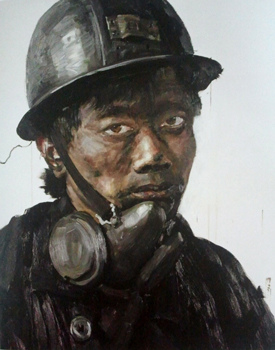|
contact rubrique Agenda Culturel : Cette adresse e-mail est protégée contre les robots spammeurs. Vous devez activer le JavaScript pour la visualiser.
文化议程 : Cette adresse e-mail est protégée contre les robots spammeurs. Vous devez activer le JavaScript pour la visualiser.
|
|
“Xu Weixin” Seven Miners
© Piao Song Yi |
|
|
|
légendes de gauche à droite |
|
présentation : Hosted by: The University of Chicago Center in Beijing
Foreword : Wu Hung Realism is plural. Xu Weixin’s realist painting differs from naturalistic and photorealistic images on the one hand, and from critical realist and revolutionary realist pictures on the other. Whereas Naturalism and photorealism superimpose art onto life, Critical Realism and Revolutionary Realism promulgate political and moral doctrines through representation. Xu instead conducts in-depth observation of ordinary people in ordinary situations and depicts what he sees. Doubtlessly he hopes to reduce the gap between art and reality, but the purpose is bring life into art, not to equate art with life. In this sense his vocation is close to that of Gustave Courbet (1819-1877), the French painter who first advocated Realist Art in reaction Classicism and Romanticism. Courbet promoted “mimicking people and things in daily life that one can touch with one’s own hand.” Although he was a committed social reformer and even participated in the revolutionary movement of the Paris Commune, he did not push the agenda of “sublimating life” to his political cause. The similarity between Xu Weixin and Courbet thus also implies a huge difference between them: separated by over a century, Xu’s resurrection of a more direct and rudimentary type of “social realism” necessarily responds to more recent trends in realism after Courbet’s time, especially Socialist Realism as the officially sponsored style in modern Chinese art. A general phenomenon in Chinese art since the 1970s, in fact, has been the rise of various rectifications of Socialist Realist Art, including Scar Art and Native Soil Art within the realist camp, aestheticism in academic art, non-representational abstract art, and contemporary Conceptual Art. The last three reject not only Socialist Realist Art specifically, but also the visual language and purpose of Realist Art in general. From here we can define Xu Weixin’s historical position and understand the significance of his paintings: he is conducting experiments within Realist Arts and reflecting upon this artistic tradition in the contexts of both modern painting and contemporary Chinese art. His recent “Coal Miners” series best articulates such rethinking, as the pictures in the series all reject typification and idealization, and as his effort to “let the subject speak” liberates realism from the grasp of ideology. He portrays coal miners laboring in private-owned local coal mines, many of whom come from the countryside. They do not represent “workers” as an anonymous social class or “ordinary folk” in an abstract sense, but they are people of flesh and blood who have names and distinct personality. He demands that everyone see these people. He has therefore enlarged their images to the proportions that have been reserved for great leaders, so that no one can evade these men who are often kept invisible in art, even in Realist Art. September 9, 2012 |


